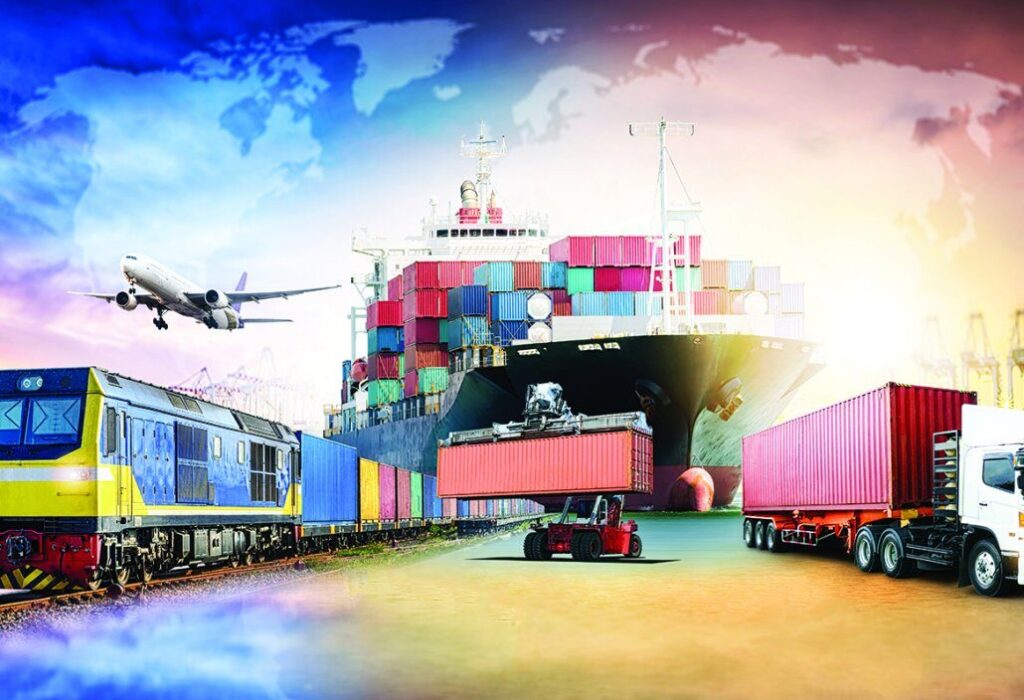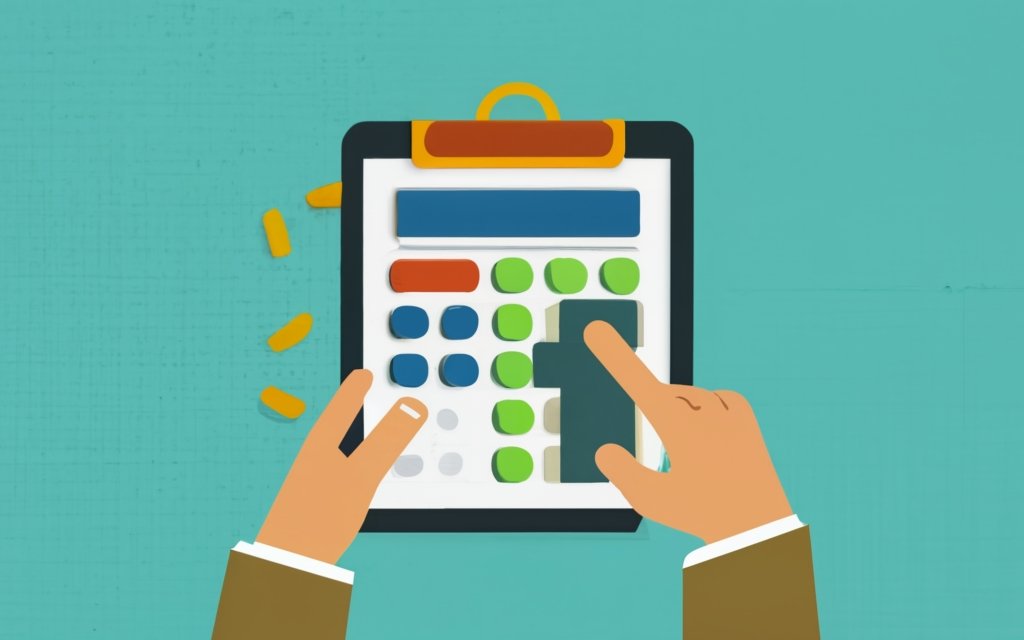China and Denmark are two countries that have a lot of trade and economic cooperation. China is Denmark’s largest trading partner in Asia, and Denmark is China’s largest source of pork and dairy products in Europe. If you are looking for a way to ship goods from China to Denmark, you might have some questions about the process, the challenges, and the best practices.
Why choose to ship from China to Denmark?

There are many reasons why you might want to ship from China to Denmark, such as:
- Accessing a large and diverse market: Denmark has a population of about 5.8 million people, and a GDP per capita of about $60,000. It is one of the most developed and prosperous countries in the world, with a high standard of living, a strong welfare system, and a stable political and legal environment. Denmark is also a member of the European Union (EU), which means that you can access the single market of over 450 million consumers and 27 countries.
- Benefiting from a strong bilateral relationship: China and Denmark have a long history of friendly and cooperative relations, dating back to 1674 when the first Danish ship arrived in China. Since then, the two countries have established diplomatic ties, signed various agreements, and exchanged high-level visits. In 2008, China and Denmark launched a comprehensive strategic partnership, which covers areas such as trade, investment, innovation, culture, education, and green development. In 2017, China and Denmark signed a joint work program, which aims to enhance cooperation in areas such as e-commerce, food safety, health, and renewable energy.
- Leveraging the competitive advantages of both countries: China and Denmark have complementary strengths and potentials in various sectors and industries. China is the world’s largest manufacturer and exporter, with a huge and diverse production capacity, a skilled and low-cost labor force, and a rapidly growing domestic market. Denmark is a global leader in innovation, design, quality, and sustainability, with a strong focus on green technology, biotechnology, pharmaceuticals, and food products. By shipping from China to Denmark, you can combine the best of both worlds and create value-added products and services for your customers.
Common challenges when shipping from China to Denmark
Shipping from China to Denmark is not without its challenges, however. Some of the common difficulties that you might encounter include:
- Language and cultural barriers: China and Denmark have different languages, cultures, and business practices, which can cause misunderstandings, delays, and disputes. For example, Chinese people tend to be more indirect and hierarchical, while Danish people tend to be more direct and egalitarian. Chinese people also prefer to build long-term relationships and trust, while Danish people value efficiency and transparency. To overcome these barriers, you need to learn the basics of the local language, respect the cultural norms, and communicate clearly and politely.
- Logistical complexity and uncertainty: Shipping from China to Denmark involves multiple steps, modes, and parties, such as suppliers, freight forwarders, carriers, customs, and brokers. Each of these steps and parties can introduce risks, errors, and delays, especially if you are not familiar with the process and the regulations. For example, you might face issues such as cargo damage, loss, or theft, shipping delays or cancellations, port congestion, or unexpected fees. To avoid these issues, you need to plan ahead, choose reliable partners, and monitor your shipments closely.
- Customs and import regulations: Shipping from China to Denmark requires you to comply with the customs and import regulations of both countries, as well as the EU. These regulations can be complex, dynamic, and vary depending on the type, value, and origin of your goods. For example, you might need to provide documents such as invoices, packing lists, certificates of origin, or licenses. You might also need to pay duties, taxes, or fees, or undergo inspections or tests. To ensure compliance, you need to research the requirements, prepare the documents, and declare your goods accurately.
Understanding the logistics of shipping from China to Denmark

Shipping from China to Denmark involves two main stages: the first stage is from the supplier’s warehouse in China to the port of departure, and the second stage is from the port of departure to the port of arrival in Denmark. The port of departure and the port of arrival depend on the shipping method that you choose, which we will discuss in the next section. Here, we will focus on the logistics of the first stage, which can be divided into three steps:
- Step 1: Preparing your goods for shipping: This step involves packing, labeling, and inspecting your goods to ensure that they are ready for shipping. You need to pack your goods securely and appropriately, using suitable materials and containers, and following the standards and specifications of your shipping method and destination. You also need to label your goods clearly and correctly, using the information and format required by your shipping method and destination. Finally, you need to inspect your goods for any defects, damages, or discrepancies, and take photos or videos as proof.
- Step 2: Arranging the pickup and delivery of your goods: This step involves booking, confirming, and coordinating the pickup and delivery of your goods from the supplier’s warehouse to the port of departure. You need to book the pickup and delivery service with a reliable and reputable freight forwarder, who will arrange the transportation of your goods by truck, rail, or air. You also need to confirm the pickup and delivery date, time, and location with your supplier and your freight forwarder, and provide them with the necessary documents and information. Finally, you need to coordinate the pickup and delivery process with your supplier and your freight forwarder, and track the status and location of your goods.
- Step 3: Handling the export formalities of your goods: This step involves completing, submitting, and clearing the export formalities of your goods at the port of departure. You need to complete the export declaration form, which contains the details of your goods, such as the description, quantity, value, and origin. You also need to submit the export declaration form and the supporting documents, such as the invoice, packing list, certificate of origin, or license, to the customs authority. Finally, you need to clear the export formalities of your goods, which means that your goods have been approved and released by the customs authority for shipping.
Choosing the right shipping method for your needs

Shipping from China to Denmark can be done by three main methods: sea freight, air freight, or courier service. Each of these methods has its own advantages and disadvantages, and the best one for you depends on your needs and preferences. Here are some factors to consider when choosing the right shipping method for your needs:
- Cost: The cost of shipping from China to Denmark varies depending on the shipping method, the weight and volume of your goods, the distance and route of your shipment, the season and demand of your shipment, and the fees and charges of your shipment. Generally speaking, sea freight is the cheapest option, followed by air freight, and then courier service. However, the cost of each method can also change depending on the specific circumstances of your shipment, so you need to compare the quotes from different providers and options before making a decision.
- Speed: The speed of shipping from China to Denmark depends on the shipping method, the transit time and frequency of your shipment, the availability and reliability of your shipment, and the customs clearance and delivery of your shipment. Generally speaking, courier service is the fastest option, followed by air freight, and then sea freight. However, the speed of each method can also vary depending on the specific circumstances of your shipment, so you need to check the estimated delivery time from different providers and options before making a decision.
- Safety: The safety of shipping from China to Denmark depends on the shipping method, the handling and storage of your goods, the security and insurance of your goods, and the tracking and monitoring of your goods. Generally speaking, courier service is the safest option, followed by air freight, and then sea freight. However, the safety of each method can also differ depending on the specific circumstances of your shipment, so you need to verify the quality and coverage of different providers and options before making a decision.
Customs and import regulations when shipping from China to Denmark

Shipping from China to Denmark requires you to comply with the customs and import regulations of both countries, as well as the EU. These regulations can be complex, dynamic, and vary depending on the type, value, and origin of your goods. Here are some of the main aspects that you need to know and follow when shipping from China to Denmark:
- Customs declaration: Customs declaration is the process of providing information and documents about your goods to the customs authority, in order to obtain clearance and permission to enter the destination country.
- Customs duties and taxes: Customs duties and taxes are the fees that you need to pay to the customs authority, based on the type, value, and origin of your goods, in order to import them into the destination country. The customs duties and taxes for shipping from China to Denmark consist of three main components: the customs duty, the value-added tax (VAT), and the excise duty. The customs duty is a percentage of the customs value of your goods, which is calculated based on the invoice price, the freight cost, and the insurance cost. The VAT is a percentage of the sum of the customs value and the customs duty. The excise duty is a fixed amount per unit or weight of your goods, which applies to certain products such as alcohol, tobacco, or fuel. The customs duty rate for shipping from China to Denmark depends on the tariff classification of your goods, which is determined by the Harmonized System (HS) code. The HS code is a six-digit number that identifies the category and subcategory of your goods. You can find the HS code of your goods by using online tools such as the EU Trade Helpdesk. The VAT rate for shipping from China to Denmark is 25%, which is the standard rate for most goods and services in Denmark. The excise duty rate for shipping from China to Denmark varies depending on the type and quantity of your goods. You can find the excise duty rates of your goods by using online tools such as the EU Taxation and Customs Union.
- Customs clearance and delivery: Customs clearance and delivery is the process of obtaining the approval and release of your goods from the customs authority, and delivering them to the final destination. The customs clearance and delivery process for shipping from China to Denmark can be done by yourself, by your freight forwarder, or by your courier service provider, depending on the shipping method and the terms of trade that you choose. The terms of trade, also known as the Incoterms, are a set of rules that define the responsibilities and liabilities of the seller and the buyer in an international trade transaction. The most common Incoterms for shipping from China to Denmark are:
- EXW (Ex Works): The seller is only responsible for making the goods available at their premises, and the buyer is responsible for all the costs and risks of shipping, including the pickup, delivery, export, import, and customs clearance of the goods.
- FOB (Free On Board): The seller is responsible for delivering the goods to the port of departure and clearing the export formalities, and the buyer is responsible for all the costs and risks of shipping from the port of departure onwards, including the freight, insurance, import, and customs clearance of the goods.
- CIF (Cost, Insurance, and Freight): The seller is responsible for delivering the goods to the port of arrival and paying for the freight and insurance, and the buyer is responsible for clearing the import formalities and paying for the customs duties and taxes of the goods.
- DDP (Delivered Duty Paid): The seller is responsible for delivering the goods to the final destination and paying for all the costs and risks of shipping, including the export, import, and customs clearance of the goods, and the customs duties and taxes of the goods.
Calculating shipping costs and managing expenses

Shipping from China to Denmark can be a costly and complex process, especially if you are not familiar with the factors and variables that affect the shipping costs and expenses. To help you calculate and manage your shipping costs and expenses, here are some tips and tools that you can use:
- Use online calculators and estimators: Online calculators and estimators are useful tools that can help you get an approximate idea of the shipping costs and expenses for your shipment, based on the shipping method, the weight and volume of your goods, the distance and route of your shipment, the season and demand of your shipment, and the fees and charges of your shipment. You can find online calculators and estimators from various sources, such as your freight forwarder, your courier service provider, or third-party websites. However, you should keep in mind that these tools are only for reference and may not reflect the actual and final costs and expenses of your shipment, which may vary depending on the specific circumstances of your shipment and the provider that you choose.
- Compare different quotes and options: Comparing different quotes and options is a good way to find the best and most suitable shipping method and provider for your needs and budget. You can request and compare quotes and options from different providers, such as freight forwarders, courier service providers, or online platforms. You should compare not only the price, but also the service, quality, reliability, and reputation of each provider and option. You should also consider the terms and conditions, the inclusions and exclusions, and the hidden fees and charges of each quote and option, and make sure that you understand and agree with them before making a decision.
- Negotiate and optimize your shipping costs and expenses: Negotiating and optimizing your shipping costs and expenses is a smart way to save money and improve your shipping efficiency and effectiveness. You can negotiate and optimize your shipping costs and expenses by:
- Choosing the right Incoterms: Choosing the right Incoterms can help you reduce your shipping costs and expenses by allocating the responsibilities and liabilities of the seller and the buyer in the most optimal way. For example, if you are the seller and you have more control and experience in the shipping process, you might want to choose an Incoterm that gives you more responsibility and liability, such as DDP, which can lower your shipping costs and expenses by avoiding intermediaries and markups. On the other hand, if you are the buyer and you have less control and experience in the shipping process, you might want to choose an Incoterm that gives you less responsibility and liability, such as EXW, which can lower your shipping costs and expenses by transferring the risks and fees to the seller.
- Consolidating your shipments: Consolidating your shipments can help you reduce your shipping costs and expenses by combining multiple smaller shipments into one larger shipment, which can lower the unit cost and increase the efficiency of your shipment. For example, if you are shipping from China to Denmark by sea freight, you might want to consolidate your shipments by using a less than container load (LCL) service, which allows you to share a container with other shippers, rather than using a full container load (FCL) service, which requires you to pay for the whole container regardless of how much space you use. However, you should also consider the drawbacks of consolidating your shipments, such as the longer transit time, the higher risk of damage or loss, and the additional fees and charges for handling and warehousing.
- Optimizing your packaging and labeling: Optimizing your packaging and labeling can help you reduce your shipping costs and expenses by minimizing the weight and volume of your goods, maximizing the protection and security of your goods, and complying with the standards and specifications of your shipping method and destination. For example, if you are shipping from China to Denmark by air freight, you might want to optimize your packaging and labeling by using lightweight and durable materials and containers, using appropriate and sufficient cushioning and sealing, and following the size and weight limits and the information and format requirements of your shipping method and destination. However, you should also avoid under-packing or over-packing your goods, as this can lead to damage, delay, or penalty.
Tips for successful shipping from China to Denmark

Shipping from China to Denmark can be a challenging and rewarding process, depending on how well you prepare and execute it. To help you achieve a successful and satisfying shipping experience, here are some tips and best practices that you can follow:
- Do your research and planning: Doing your research and planning is the first and most important step for shipping from China to Denmark, as it can help you avoid many problems and issues that might arise during the shipping process. You should do your research and planning by:
- Understanding your product and market: Understanding your product and market can help you determine the type, value, and origin of your goods, the demand and competition of your goods, and the opportunities and challenges of your goods. You should understand your product and market by analyzing the features and benefits of your goods, the needs and preferences of your customers, and the trends and regulations of your industry.
- Choosing the right supplier and partner: Choosing the right supplier and partner can help you source, produce, and ship your goods in the most efficient and effective way. You should choose the right supplier and partner by evaluating the quality and reliability of their products and services, the reputation and credibility of their business and operations, and the compatibility and communication of their values and goals.
- Setting the right budget and timeline: Setting the right budget and timeline can help you manage your resources and expectations in the most realistic and reasonable way. You should set the right budget and timeline by estimating the costs and expenses of your goods and shipping, the transit time and frequency of your shipping, and the availability and reliability of your shipping.
- Monitor and track your shipment: Monitoring and tracking your shipment is the second and most crucial step for shipping from China to Denmark, as it can help you ensure the safety and security of your goods and the timely and accurate delivery of your goods. You should monitor and track your shipment by:
- Using online tools and platforms: Using online tools and platforms can help you monitor and track your shipment in the most convenient and comprehensive way. You can use online tools and platforms such as your freight forwarder’s website, your courier service provider’s website, or third-party websites such as Track-Trace or 17Track. These tools and platforms can provide you with real-time updates and notifications about the status and location of your shipment, as well as the estimated delivery time and any issues or delays that might occur.
- Keeping in touch with your supplier and partner: Keeping in touch with your supplier and partner can help you monitor and track your shipment in the most accurate and reliable way. You can keep in touch with your supplier and partner by using various communication channels, such as phone, email, chat, or video call. You should communicate with your supplier and partner regularly and frequently, and inform them of any changes or problems that might affect your shipment. You should also ask them for any documents or information that you might need for your shipment, such as the tracking number, the bill of lading, or the invoice.
- Resolving any issues or disputes: Resolving any issues or disputes can help you monitor and track your shipment in the most effective and efficient way. You can resolve any issues or disputes by identifying the cause and the responsibility of the issue or dispute, contacting the relevant party or authority, and providing the evidence and the solution for the issue or dispute. You should resolve any issues or disputes as soon as possible, and avoid escalating or prolonging them, as they can cause damage, delay, or penalty to your shipment.
- Using online tools and platforms: Using online tools and platforms can help you monitor and track your shipment in the most convenient and comprehensive way. You can use online tools and platforms such as your freight forwarder’s website, your courier service provider’s website, or third-party websites such as Track-Trace or 17Track. These tools and platforms can provide you with real-time updates and notifications about the status and location of your shipment, as well as the estimated delivery time and any issues or delays that might occur.
Finding reliable shipping partners and suppliers

Shipping from China to Denmark can be a smooth and successful process, if you have the right shipping partners and suppliers to support you. Finding reliable shipping partners and suppliers can be a challenging and time-consuming task, but it can also be a rewarding and worthwhile investment. Here are some ways and sources that you can use to find reliable shipping partners and suppliers:
- Use online platforms and directories: Online platforms and directories are useful resources that can help you find and compare various shipping partners and suppliers, based on their products and services, their prices and reviews, and their qualifications and certifications. You can use online platforms and directories such as Alibaba, Made-in-China, Global Sources, or Freightos. However, you should also verify the authenticity and credibility of the shipping partners and suppliers that you find online, and check their references and feedback from previous customers.
- Use trade shows and exhibitions: Trade shows and exhibitions are valuable opportunities that can help you find and meet various shipping partners and suppliers, face to face, and establish a personal and professional relationship with them. You can use trade shows and exhibitions such as Canton Fair, China International Import Expo, Transport Logistic China, or Danish Maritime Fair. However, you should also prepare and plan your visit to the trade shows and exhibitions, and follow up and maintain your contact with the shipping partners and suppliers that you meet there.
- Use referrals and recommendations: Referrals and recommendations are trusted sources that can help you find and choose shipping partners and suppliers that have proven their quality and reliability to other customers or partners. You can use referrals and recommendations from your friends, family, colleagues, or business associates, who have experience or connections with shipping from China to Denmark. However, you should also evaluate and compare the shipping partners and suppliers that you get from referrals and recommendations, and make sure that they suit your needs and preferences.





